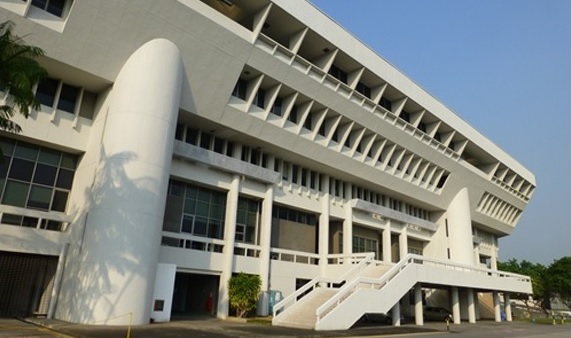藝評
留得下的七十年代 | Preserving the 1970s
約翰百德 (John BATTEN)
at 9:30am on 22nd November 2018


圖片說明Captions:
1. 新加坡裕廊鎮大會堂 Jurong Town Hall, Singapore
2. 香港中環郵政總局,2018 General Post Office, Central, Hong Kong, 2018.
(Please scroll down for English version)
執筆之時,我正身處澳洲悉尼,一個我在15歲時首次到訪的城市。1976年的元旦日,我和兩位朋友一起路經這裡。我們在悉尼港欣賞了第一場新年烟花匯演:幾分鐘令人失望的烟花火箭!此前多年,新年慶祝活動一直都在英王十字區舉行,當地人通常簡稱King’s Cross為「十字區」(The Cross),是悉尼市的傳統娛樂(紅燈)地區。在遠離英王十字區的地方引入烟花匯演,正是整頓該區的官方姿態,也是對士紳化的早年肯首。
我們由墨爾本出發,一直都是沿岸搭便車,最後來到終點:人口只有405人,在昆士蘭黃金海岸內陸翠兒河的塔姆巴岡姆小鎮。這段1,000 英哩長的旅程,讓我們離家一整月,期間我只匆匆地打了一次電話回家跟母親報平安。當年,長途電話只會在極緊急的情況下才會使用。現時,即使有定位追踪和即時通訊的技術,家長普遍都不會認同十來歲年輕人坐一個月便車去「體驗世界」。我猜,大部份少年人本身也會認為這樣做不會很安全。
但真的那麼嚇人嗎?單單是生活節奏,便有更多釀成災難的機會了。對健康來說,我們的生活只有唸書太用功、工作壓力,還有酒精、暴食、吸煙、在藥房可輕易買到的止痛藥引誘,加上生命中無可避免的個人危機,肯定比公路上的自由來得更大威脅吧?
我這次住在英王十字區,雖然酒店指自己的位置是較高格調的鄰區帕茲角(Pott’s Point)!英王十字區素來都是悉尼的紅燈區及遊客區,但自1976年已開始轉變,那時脫衣舞俱樂部、「成人商店」林立,易服表演、流鶯、妓院、自娛用藥,還有各式各樣的酒吧隨處可見,令這裡成為越戰時期到訪軍人的消遣熱點。在過去40年,它已演變成為深夜派對區,計有為年青人而設的俱樂部、悠閒咖啡座、精緻餐廳和小酒吧。然而,在發生多宗個別街頭暴力事件後,悉尼酒牌當局最近引入了更嚴格的酒吧營業時間。這些發牌新措施也是該區經歷重大士紳化後的結果。區內新建高樓公寓的業主希望環境更寧靜,否則他們的投資價值便會大降。但一個地區的生態並不會迅速消失,所以英王十字區保持了一些原生特色 –– 還有一點三教九流。
悉尼的成功,可見於其街道地面一片興旺的活動。我在英王十字區不遠處,坐在街道旁的小桌吃了午餐。這家咖啡座名叫Fable,標榜出品都是「農場直送餐桌」,食物確是營養豐富、美味,而且物有所值。街道對面是一家老式雜貨店,其1970年代的招牌指出,它出售的是「小物品」、「糖果」和「飲品」。雜貨店於三年前轉售了給一個26年前移居澳洲的上海家庭。依我看來,他們住在澳洲的日子比我還要長!店內陳設有點搖晃不定,貨架都是自製的,自上手買家以後便一直保持原貌,感覺就像上世紀七十年代。
我們都知道,香港的個性改變,是來自貪得無厭的物業發展而不是個別老區的士紳化。香港的1970年代建築物至今已絕無僅有,而最佳的例子,也是香港少有的粗獷主義建築,就是位於中環的郵政總局。在最近由M+於M+展亭舉辦的展覽中,其中一項展品的主題是新加坡的裕廊鎮大會堂的建築。驚人之處,在於這座建築幾乎與我們的郵政總局一模一樣,兩者都是同期興建。但是香港政府為配合中環填海重建,已計劃把郵政總局所在的土地出售:在現時從未作公開諮詢的規劃下,郵政總局將被拆卸。
中西區關注組深信郵政總局應被保留,如有需要也可改作其他用途;它是中環填海區的重要組成部份,更是香港1970年代建築的代表作。請前往下列網站參與聯署,表達你對保留郵政總局的支持。
保留郵政總局聯署: http://supporthk.org/zh-hant/petition/保留中環郵政總局
原文刊於《明報周刊》,2018年10月28日
Preserving the 1970s
by John Batten
I am writing this from Sydney, Australia, a city I first visited aged fifteen years old when two friends and I passed-through on New Year’s Day 1976. We watched the first-ever New Year fireworks display over Sydney Harbour, which lasted an underwhelming few minutes of exploding rockets! In previous years, New Year celebrations had always been held in King’s Cross (usually known simply as ‘the Cross’), the city’s traditional entertainment area. The introduction of a fireworks display away from King’s Cross was an official gesture to clean-up the area and an early nod to gentrification.
We were hitch-hiking around the coast from Melbourne to our eventual destination, the small town of Tumbulgum (population 405) on the Tweed River, inland from Queensland’s Gold Coast. This 1,000 mile trip saw us away for a month and I made a mere single telephone call during the trip to quickly assure my mother “all was fine”. In those days, long-distance telephone calls were only made in a dire emergency. Nowadays, despite tracking and instant communication, a month’s hitch-hiking for a young teenager would not be the ‘worldly experience’ approved of by parents and, I suspect, most teenagers themselves would think it unsafe.
But, is that a false fear? Surely, just the rhythms of life offer greater opportunities for disaster. Our lifestyle of over-studying and work stress, the temptations of alcohol, over-eating, smoking, over-the-counter pain-relief drugs, as well as life’s inevitable personal crises, are surely a greater threat to our health than the freedom of the open road?
I am staying in King’s Cross, although the hotel refers to it location as the more genteel nearby Pott’s Point! King’s Cross has long-been Sydney’s red-light and tourist district, but it is much changed since 1976, when strip-clubs, “adult shops”, transvestite drag shows, street-walkers, brothels, recreational drugs, and a variety of bars made it an R&R destination for visiting soldiers during the Vietnam War. Over the last forty years, it has evolved into a late-night party district with clubs, relaxed cafés, fine dining and small bars catering to the young. However, after isolated incidents of street violence, the Sydney liquor licensing authorities recently introduced stricter bar trading hours. These new licensing measures are also a consequence of the intense gentrification of the area. The owners of the area’s newer high-rise apartment buildings want a quieter environment lest their investments are devalued. But, the ecology of a district can’t be erased so quickly, and King’s Cross maintains pockets of genuine character - and seediness.
The success of a city is its vibrant street-level activity. Just down from King’s Cross, I had lunch sitting at a street-side table at Fable, a self-professed “farm to table” café. The food was incredibly nourishing, tasty and good-value. Across the road is an old-style grocery store selling, according to its 1970s-era sign: “small goods”; “sweets’, “drinks”. The business had been bought three years ago by a family from Shanghai, who arrived in Australia 26 years ago. They had, I observed, lived longer in Australia than me! The shop interior was ramshackle, the shelves self-constructed, it was completely unchanged from the previous owner; it felt like the 1970s.
In Hong Kong, as we know, it is avid property development rather than specific gentrification of our older districts that is changing the character of the city. Hong Kong has only rare examples of 1970s architecture left and the best example and one of the few examples of brutalist architecture in Hong Kong is the General Post Office (GPO) in Central. At a recent exhibition mounted by M+ at its M+ Pavilion, one of the displays featured the architecture of Jurong City Hall in Singapore. Remarkably, the architecture is almost identical to our GPO and built at the same period. But the government is planning to sell the land on which the GPO is sited as part of its redevelopment of the Central Reclamation: under currents plan, which have never been open to public consultation, the GPO will be demolished.
The Central & Western Concern Group strongly believes that the GPO must be preserved, re-adapted if necessary, and be an important part of the Central Reclamation as a living example of 1970s Hong Kong architecture. Please add your support by signing the petition – the website is below.
GPO petition: https://supporthk.org/en/petition/preserve-general-post-office
This article was originally published in Ming Pao Weekly, 28 October 2018, Chinese version translated by Aulina Chan.
